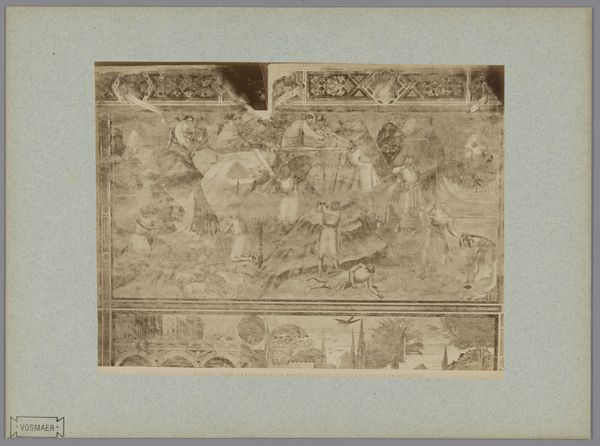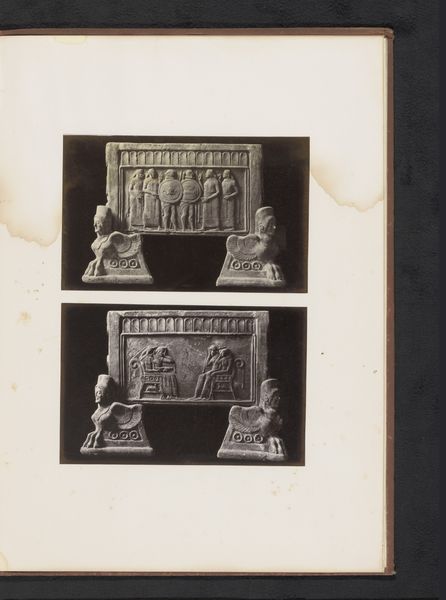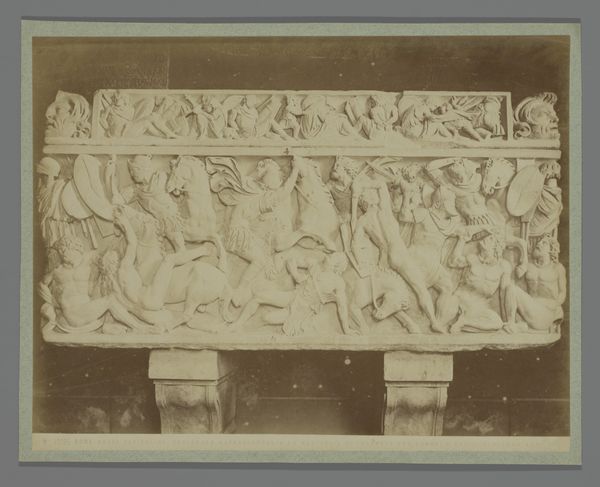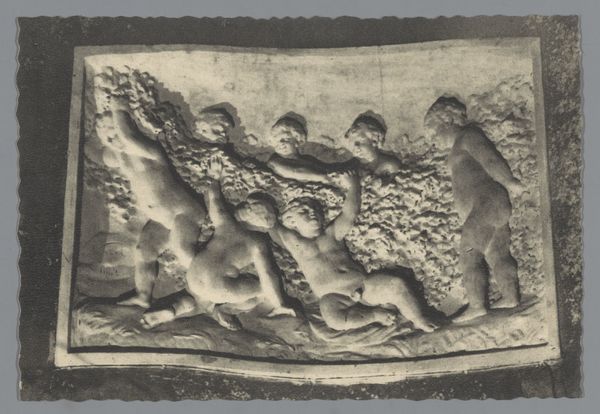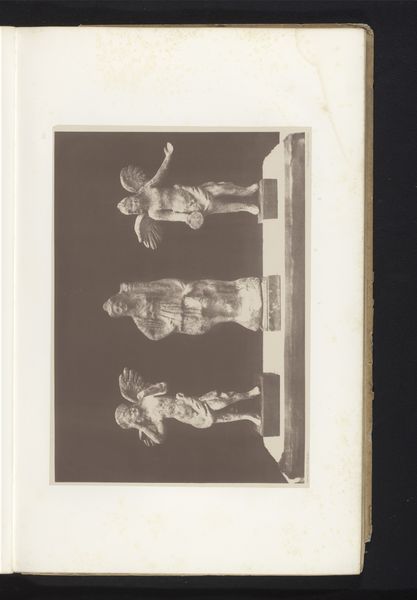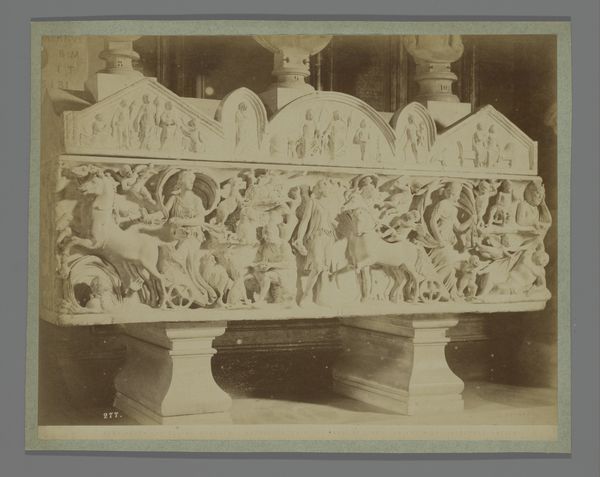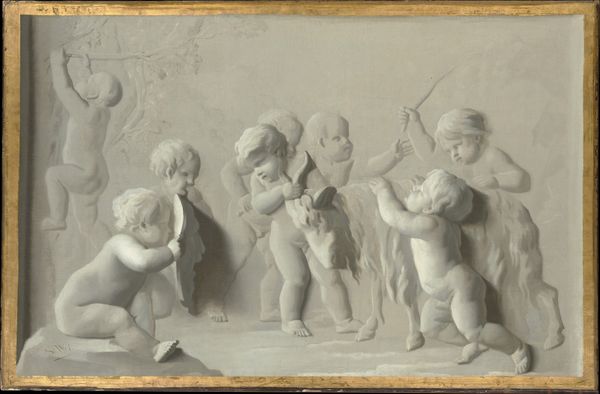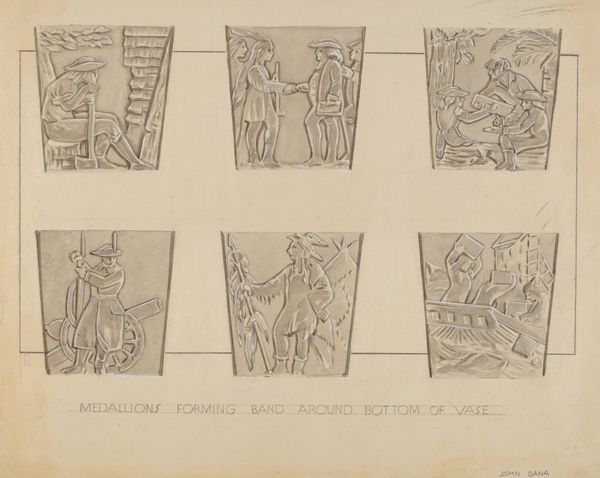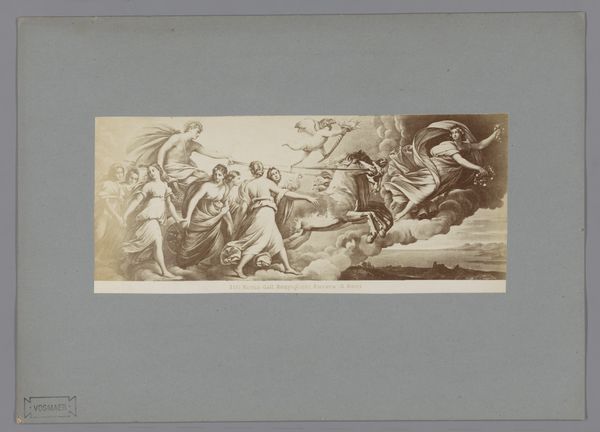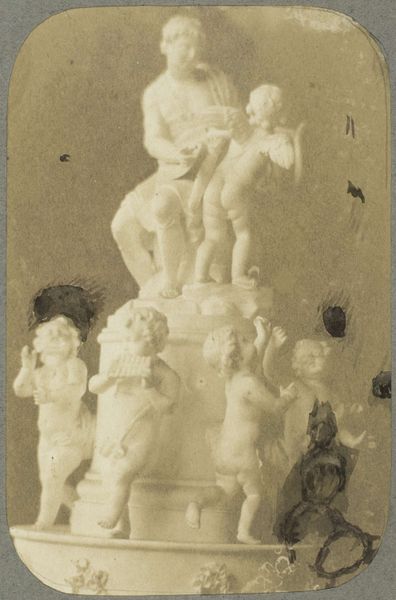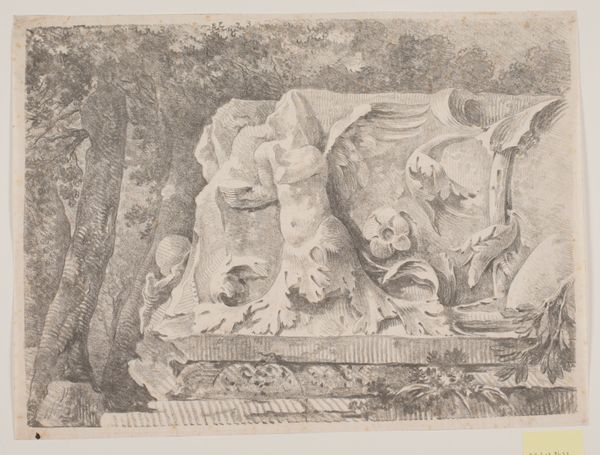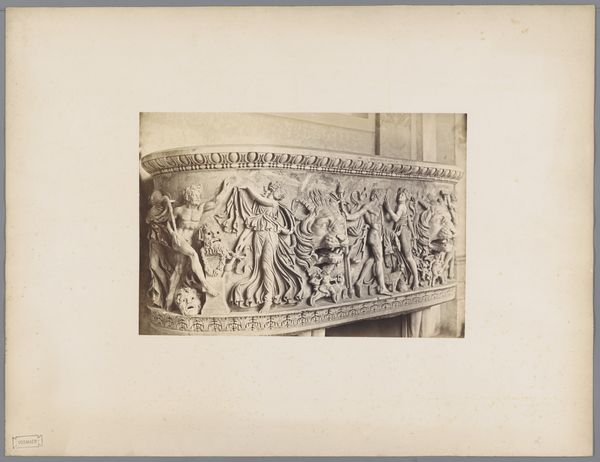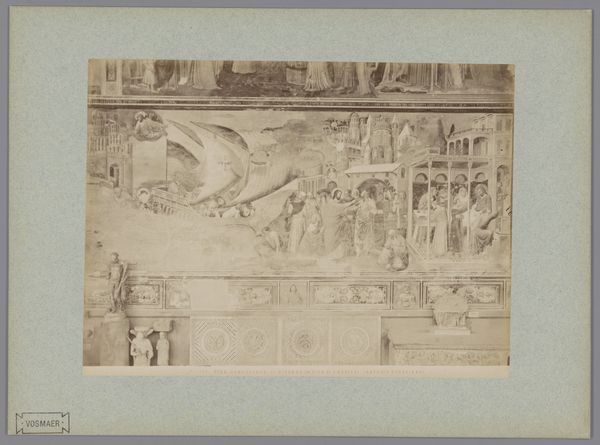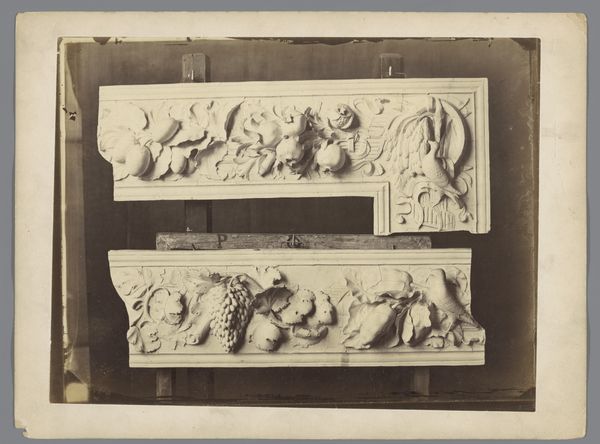
Relief from the Frieze of the Temple of Victory Apteros 1787 - 1824
0:00
0:00
drawing, print, etching
#
drawing
#
aged paper
#
toned paper
#
neoclassicism
#
ink paper printed
# print
#
etching
#
greek-and-roman-art
#
personal sketchbook
#
coloured pencil
Dimensions: Plate: 3 15/16 × 20 3/8 in. (10 × 51.8 cm) Sheet: 6 5/8 × 20 11/16 in. (16.8 × 52.6 cm)
Copyright: Public Domain
Curator: Looking at this toned paper, what first strikes you about this etching from the Metropolitan Museum of Art? Editor: The dynamism. Even in this muted palette, I sense incredible movement—horses rearing, figures lunging. It's almost a contained chaos. What can you tell me about it? Curator: This is a print made between 1787 and 1824 of a “Relief from the Frieze of the Temple of Victory Apteros,” based on artwork from the Greek and Roman periods. It feels so archetypal, right? Editor: Absolutely. The figures, locked in eternal combat, evoke so many heroic narratives. Is this a common subject? Curator: Well, victory and combat are eternally intertwined! What's interesting here is not just the conflict, but how this frieze represents a continuity of values—courage, strength, the justification of war. It’s all right there. Editor: Do you mean how 18th century artists used the formal techniques to associate themselves to the glory of that era? Curator: Precisely. This etching serves as a visual bridge. It isn’t a mere copy; it’s an interpretation meant to underscore certain enduring cultural narratives—the pursuit of glory, the power of empire. I’m wondering, to what degree it reinforces them as much as reflecting them. Editor: It's definitely a visual endorsement, in a way sanctifying its patrons at the time of its creation. I suppose this imagery provides us an occasion to revisit what 'victory' truly means across historical contexts, doesn't it? Curator: It absolutely invites a reconsideration, challenging us to understand whose victories are celebrated and at what cost, given both how war marked Europe at the time and also the source the Western civilization had just excavated. Editor: Food for thought. The composition certainly achieves that, creating both energy and a somber echo across time. Curator: Agreed, it reveals how artists of later eras use these established visual symbols to comment on their present and, hopefully, suggest a deeper awareness in us.
Comments
No comments
Be the first to comment and join the conversation on the ultimate creative platform.
